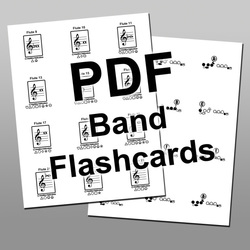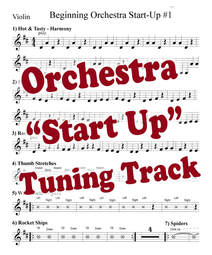 This set of Warm-Up ("Start-Up") exercises is a LIFE SAVER! It is magical! Well, that is a slight exaggeration, but these exercises DO fix my BIGGEST PROBLEMS with teaching my beginning string class, which is getting everyone's instrument tuned up without wasting a ton of class time. Maybe I'm a little slow, I know. It did take me YEARS to figure out that I could have the students play along with their method book CD while I walk around and tune their instruments. That was a huge upgrade from letting my students do "whatever" while they stood in line to bring their instruments to me for 10+ minutes. However, this new set of "Start-Ups" is SO MUCH BETTER! Imagine seeing all your little string-lings seriously focused and happily engaged in exercises that reinforce essential technique and develop new skills without a single flick of your baton or word of instruction. Yes! That is exactly what happens when you use this Orchestra Start-Up exercise. Unfortunately I currently only have one of these, but it works great for the first 2 months of beginning orchestra. Someday I'd like to make a series of progressively more advanced Start-Ups, but for now I just use the method book CD once this set becomes too easy for the beginners. Why not give it a try? It is totally FREE! You get a PDF to print out parts for each instrument and a fun, engaging 7-minute MP3 file to play. Download both files HERE, and happy tuning!
1 Comment
I am SO EXCITED to start using customized band luggage tags this year! For all the WHY's and HOW TO's please see the full blog post on BandDirectorsTalkShop.com. In researching for this post I discovered some great online options for buying and creating band luggage tags. If you would like details about the companies and products I've found, please read on...
 "Mac and Cheese!"..."Everybody Freeze!" Every music teacher needs a bag full of verbal tricks to get the attention of a large noisy group. No matter how disciplined your class is, there will be moments (in and out of class) when you quickly need to grab everyone's undivided attention. Buzzfeed to the rescue! Using the link below you can browse through a list of over two dozen attention grabbers. Two or three are bound to work perfectly for your personality as a teacher and fit your classroom needs. Instant silence has never been so easy! https://www.buzzfeed.com/weareteachers/27-attention-getters-for-quieting-a-noisy-classroo-h0xt?utm_term=.rexEk34p5#.wtVmGBoQL  This poster started as a graduate school project, and represents hundreds of hours of research and graphics work. You will enjoy using this poster to clarify the essential periods of jazz history and to point out the most acclaimed jazz giants on each instrument. After showing the primary elements that evolved into the early jazz of New Orleans, the timeline continues into the swing, bebop, post bop, and fusion periods. In addition to individual innovators, a "big band tradition" ribbon shows the most important big bands of each era. The poster can be printed up to 4' long with high resolution graphics, and will look attractive on your band room wall. Download now for FREE as a JPG or PDF file, compliments of StepWise Publications, from our Free Music Posters page (click here). 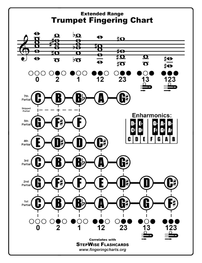 About a year ago I was contacted by the Richard Canter, the author of the Scale and Rhythm Chunks books for band. He was finishing his 2nd edition of the books, and liked the StepWise Fingering Charts, and asked if he could use them in the books. I was delighted to say "yes", beginning a 3-month collaboration with him that took my charts to the next level. He and his publisher, Focus on Music, had several ideas for improving the charts, including: 1-Adding an Enharmonics inset 2-Showing 4-valve options for Tuba & Baritone 3-Showing 3rd valve slide extensions for Trumpet 4-Increasing the range for all brass instruments Just as we were wrapping up this collaborative effort to make the ultimate one-page fingering chart for every band instrument, we realized that we would have a chance to meet in person at the upcoming Ohio Music Educators Conference convention. He lives and works in Ohio, and I was flying out there from Utah to present a clinic on jazz improvisation. It was an amazing coincidence! We became quick friends at the conference, and I was excited to see his 2nd edition books, hot off the press, complete with my new StepWise fingering charts. It is about time I update this website with the Extended Range charts that we created together a few years back. So, if your brass players are ready to expand their range up to the 7th partial, you can now download the Extended Range Charts on each brass instrument page. Here's to getting our brass musicians playing HIGHER along with faster and louder! 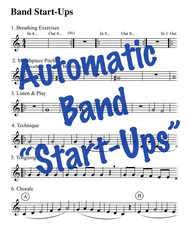 The magically appearing "To-Do" list at the start of every beginning band class seems to go on forever...help Andrew unstick his trumpet valve...fix Lucy's bent clarinet bridge key...give Jasmine the new music she missed when she was sick last class...check Aiden's grade and explain why he doesn't have an "A"...and most importantly (but always at the very bottom of my list) TAKE ROLL! I despise making the rest of the class sit around waiting for this stuff to be done, but it MUST be done, and at least some of it must be done before rehearsal can begin. My solution is a set of warm-up exercises that the students can go through on their own. I call them "Start-Ups", and they work like a charm! Each set of "Start-Ups" has a play-along track that guides students through the exercises. This is what makes them "Automated", and also what allows you to handle all your daily busy work while keeping the students actively engaged in worthwhile music-making. In the play-along tracks a narrator provides helpful tips while directing students' attention to each upcoming exercise. Here is a brief overview of the exercises: 1. Breathing Exercises - to encourage greater volume and control of the air 2. Mouthpiece Pitches - helps brass AND woodwind players with embouchure, while also teaching them to count multi-measure rests 3. Listen & Play - long tone exercises which are especially helpful to get brass students playing the correct partial 4. Technique - includes lip slurs for brass and carefully selected fingering intervals for woodwinds 5. Tonguing - basic tonguing exercise to increase skill and speed 6. Chorales - simple, but beautiful four-measure, three-part chorales 7. Scales - gradually adds developmentally-appropriate major scales 8. Circle of Fourths - simple series of notes that teaches the order of fourths 9. Fingering Chromatics - students use a fingering chart to slowly practice a series of chromatic fingerings You can download the Term 1 set of Band Start-Ups for FREE by clicking HERE. You've just GOTTA give this a try with your beginning band, and experience the freedom (for you) and the increased musicianship (for your students) that comes with using these on a daily basis. Happy teaching! 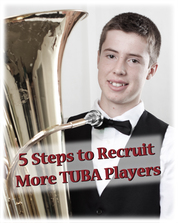 I have 5 steps to recruiting more tuba players into your beginning band. They are: 1. Buy enough school instruments 2. Discuss genetic lip shape 3. Make all brass students try tuba 4. Make the tuba COOL 5. Prepare for tuba becoming too popular This blog post has been reposted to: www.banddirectorstalkshop.com. Please go there to read it in full. 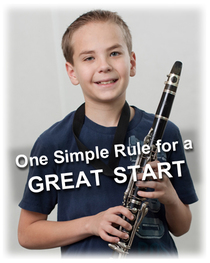 This has been the best FIRST week of school EVER! I usually despise the first week of band and orchestra because of how crazy it feels. Here is a short list of the things that must be done with beginners: 1-Check out lockers 2-Pass out class documents 3-Assign seats 4-Check out school instruments 5-Teach how to hold & care for instruments 6-Teach how to create a good first tone 7-Teach the basics of music notation 8-Get students playing their first 3 notes 9-Establish class rules and norms Can anyone truly accomplish all these things in one week?! I have always hated the feelings of frantic CRAZINESS attempting all this in the first week, along with the inevitable feelings of FAILURE that accompany the effort. I know that many music teachers say, "That is why I have a summer program", and I agree that starting students in homogeneous summer classes can be extremely beneficial. However, I have personally never been able to get more than 60% of incoming students to attend my summer band or summer orchestra program, and I have really disliked trying to make the first month of school feel successful to each student when there is such disparity in between students' prior musical experience. I determined this year to solve the "HAVES vs HAVE NOTS" problem by eliminating my annual summer program (my family sure enjoyed the extra time we spent together) and starting the school year with a revolutionary approach to teaching heterogenous beginning instrumental classes: NO INSTRUMENTS for 2 WEEKS. I can hear plenty of outraged voices from my respected colleagues at this absurd notion: "Students NEED to get playing on instruments as soon as possible to be highly motivated"..."I want to get them making successful sounds as fast as possible"..."Parents become awe-struck, devoted supporters when they hear music after the first day of band". 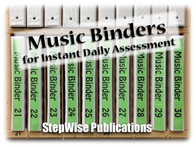 My job as a band/orchestra teacher has been a lot easier since I started using "Music Binders". Such a lovely, bland name, isn't it? I probably should call them "Secret Codebooks of Sonic Awesomeness" or something, but for now each binder has a printed spine (this year's color of card stock is lime green) that simply says "Music Binder ___" (a number between 1-43 goes in each space) slid into the clear plastic cover. Yep, they are pretty dang awesome! Materials & Costs Anyone who wants to use the system I am suggesting here will have to deal with a couple of logistical problems. First, you will need a rack or some other system for keeping the binders organized and accessible to the students as they enter your classroom each period. Second, you will need a small but hefty chunk of money to purchase the binders, sheet protectors, dry erase markers, and zipper pouches. I was personally able to use my killer carpentry skills to convert a couple of shelves into racks that perfectly accommodate up to 80 binders. I also used school textbook funds (with full disclosure to my principal) combined with band funds to purchase 50 white view binders from the district warehouse for $3 each, along with zipper pouches ($1 each), white board markers, and tons of sheet protectors from Wal-Mart for a grand total of less than $300. This is some of the best money I have EVER spent! 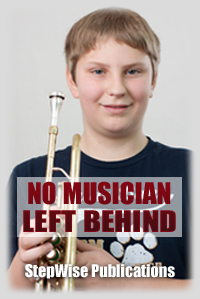 Having taught band for 17 years, I am very aware of the tendency for SOME beginning band and orchestra students to get overwhelmed with note reading after getting to the 4th, 5th, and 6th notes. I have seen this happen every year around the 3rd month of school. As I continue to lead my classes through the method book, teaching new notes and concepts day after day, hoping that everyone is building a comprehensive understanding of music notation, some of my students begin a secret struggle to keep up with the rest of the class. How Some Begin to Slip I don't notice which students are falling behind at first, because kids don't tend to raise their hands and say, "Mr. Winters, I feel stupid right now, and I am getting totally lost!". Instead they revert to various coping mechanisms, such as trying to play by ear or watching the fingerings of students around them. At the same time they stop focusing on building logical schemata for how their fingerings are organized, because they don't feel like there is any comprehensible order to all the lines, spaces, and accidentals they see, and the keys they press, or fingers they place, or positions they move their slides to. They come to believe that our system of music notation and correlating fingerings is a jumbled mess of unconnected factoids that are impossible to memorize. When they refer to the fingering chart in the back of the method book they can find each note's fingering, but not a way to organize the hundreds of bits of information so it can be easily memorized. After teaching for several years I finally noticed this pattern of "losing" a small percentage of young musicians by the 3rd month, and I became obsessive about figuring out how I could teach so that no musician was left behind! |
Author
Curtis Winters has taught band, orchestra, and jazz band at a small Title 1 junior high school in Orem, UT for 18 years. Archives
May 2018
Categories
|

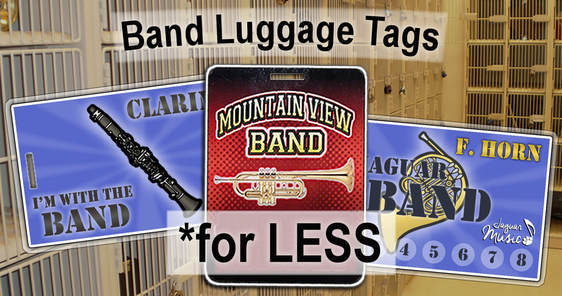

 RSS Feed
RSS Feed
